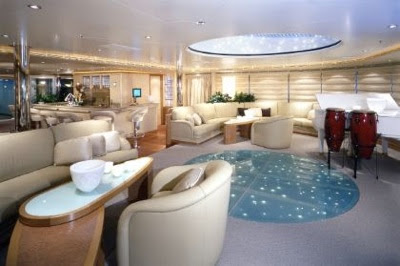 If you're looking to visit an exotic tropical location, that also yields many a millenia of Mediterranean culture, art and tradition - a fantastic meal and great wine, then the Romanesque Island of Sardinia must go to the top of your list. History describes the island as a Phoenecian colony that was conquered and colonized by the Romans during the First Punic war in 238BC. The history of Sardinia as a human settlement dates backs thousands of years. Archaelogical evidence of human existence is represented by the numerous dwellings called nuraghe.
If you're looking to visit an exotic tropical location, that also yields many a millenia of Mediterranean culture, art and tradition - a fantastic meal and great wine, then the Romanesque Island of Sardinia must go to the top of your list. History describes the island as a Phoenecian colony that was conquered and colonized by the Romans during the First Punic war in 238BC. The history of Sardinia as a human settlement dates backs thousands of years. Archaelogical evidence of human existence is represented by the numerous dwellings called nuraghe.The beaches here are incredible. However, with the vast amount of immaculately preserved cultural and historical record of their rich and so well preserved traditions, an ample amount of time should be dedicated to 'exploration' and discovery' of the island. In the capital city of Cagliari, make to sure to visit these historical bases.
Raccolta di Cere Anatomiche Cagliari
Creepy, anatomically-correct wax models line the halls of the Raccolta di Cere Anatomiche, and their insides are on display for all the world to see. Models are carefully cross-sectioned to reveal the hidden intricacies of the human body. The interesting displays combine science with macbre entertainment.
Address: Piazza dell'Indipendenza 7
Cagliari CA Italy
Te.l: (o11) +39 (0) 70 6757627
National Picture Gallery of Cagliari (Pinacoteca Nazionale di Cagliari)
Cagliari's Pinacoteca Nazionale's collection focuses on Sardinian art from the 15th to the 17th century. Four works by Sardinia's premiere artist, Pietro Cavaro, are a highlight. Other items of interest include a fascinating collection of 14th century Spanish-Arab pottery and a look at the history of Sardinian weaponry.
Address: Piazza Arsenale
Cagliari CA Italy 09124
Tel: (011) +39 (0) 70 674054
Museo Archeologico Nazionale
Ancient Sardinia was once populated by a civilization known as theNuragici, who left behind several artifacts, including curious towers known as nuraghes, scattered accross the island. Some of the most intriguing pieces left behind are housed safely in the Museo Archeologico Nazionale. Look for bronzetti, carved bronze statues it's said date back as far as 5000 BC.
Address: Piazza Arsenale
Cagliari CA Italy
(011) +39 (0) 70 684000
Ref:http://www.sardinia.worldweb.com/ProvinceofCagliari/CagliariCA/SightsAttractions/Museums/




















